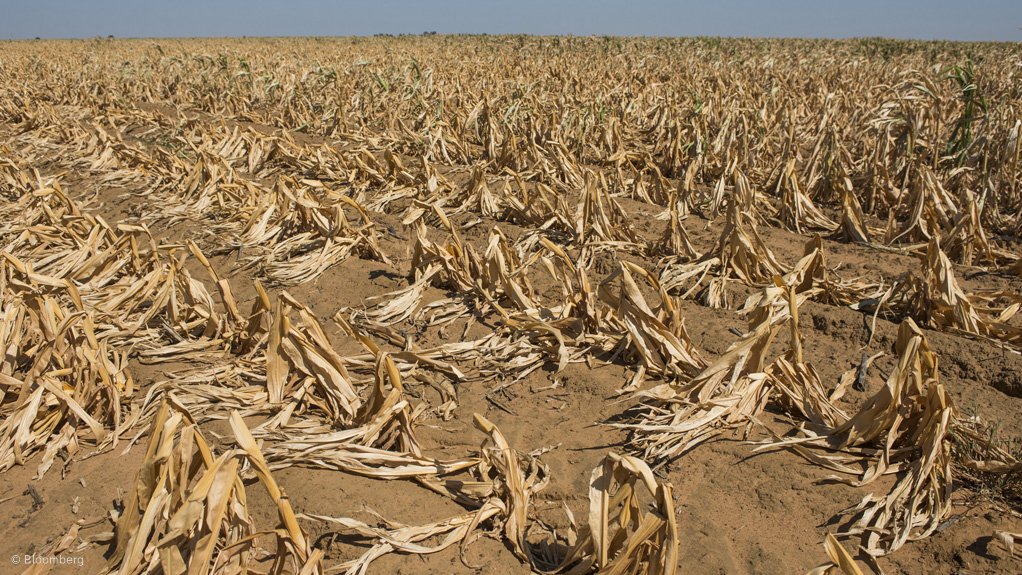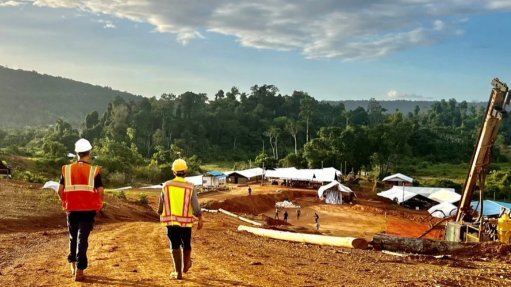Climate change shaping water management infrastructure



HARTLEY BULCOCK AND ROSS WINKWORTH HARTLEY BULCOCK AND ROSS WINKWORTH Changing rainfall and temperature patterns necessitate that mines adapt the design of water-management infrastructure to avoid risks
WATER WORRIES Many mines in Southern Africa are located in areas where the trend of substantial changes in rainfall variability is already evident
Photo by Bloomberg
Designing water-related infrastruc- ture for mines needs to be based on future climate predictions rather than only past experience, asserts natural resource and development solutions provider SRK Consulting South Africa (SA) senior hydrologist Dr Hartley Bulcock.
Changing rainfall and temperature patterns necessitate that mines adapt the design of water-management infrastructure to avoid risks, from environmental pollution to tem- porary plant closure, says SRK Consulting SA.
Mines face the dilemma of having to manage cycles of drought and flooding, which now occur more often and more intensely, highlights Bulcock.
He illustrates that heavy rainfall – more than 20 mm/d of precipitation – is forecast to occur more frequently, with extreme flood events becoming more intense. Designs for water storage facilities must, therefore, accommodate greater variation in a region’s rainfall average and design rainfall, based on historical data.
Certain mining areas are also prone to a greater risk of drought, resulting in the requirement of larger water storage capacity to maintain operations through extended dry spells, says Bulcock.
“We have seen mines struggling to manage water resources as climate change raises average daily temperatures and increases evaporation. With more frequent dry spells, there is heightened competition with other stakeholders for scarce water resources.”
SRK hydrologist Ross Winckworth notes how increased evaporation levels in the coming decades will impact on the water levels of mines’ surface storage facilities. With Southern Africa’s temperatures expected to rise between 1.5 °C to 3.5 °C by 2065, depending on location, evaporation is likely to rise between 5% and 10%, even reaching 15% to 25% by 2100.
“Higher evaporation levels, therefore, need to be considered when designing tailings dams and other surface storage facilities, as this results in less return water being available to pump back into the plant, says Winckworth.
Conflicting impacts of climate change require mines to generally enlarge their capacity to store and channel excess water during heavy precipitation events, and conserve larger amounts to be self-suffi- cient during increasingly intense drought periods.
“Too little capacity could mean spillages from effluent or return water dams, with potential environmental consequences,” adds Bulcock.
Simultaneously, mines will need larger storage areas during a drought if expensive downtime of concentrators or other water-dependent operations is to be avoided. Regardless of projected climate change impacts, mines need to ensure they improve their water use efficiency, says Bulcock.
However, Winckworth states that the indirect impacts of climate trends are equally challenging and include growing risks to surface impoundments, such as pollution control dams and tailings dams, the performance of water-treatment facilities, labour availability and community health.
“ . . . floods can pose unforeseen risks to the structural integrity of mining infrastructure. Too much water on site can also affect underdesigned facilities, where the design of the structures is based on historical data, which, in turn, raises the risk of breaching compliance regulations and leading to other health hazards,” he explains.
Rising daytime temperatures, especially in drier parts of South Africa, could lead to more days where employees are simply unable to perform normal duties without additional controls, such as improved air- conditioning for both above and below ground operations, owing to excessive heat.
Bulcock agrees that water is likely to be the primary medium through which economies, ecosystems and people will be affected by climate change.
Many mines in Southern Africa are located in areas where the trend of substantial changes in rainfall variability is already evident, so mines need to carefully consider whether their water management facilities are designed to deal with the impacts of climate change, he concludes.
Comments
Press Office
Announcements
What's On
Subscribe to improve your user experience...
Option 1 (equivalent of R125 a month):
Receive a weekly copy of Creamer Media's Engineering News & Mining Weekly magazine
(print copy for those in South Africa and e-magazine for those outside of South Africa)
Receive daily email newsletters
Access to full search results
Access archive of magazine back copies
Access to Projects in Progress
Access to ONE Research Report of your choice in PDF format
Option 2 (equivalent of R375 a month):
All benefits from Option 1
PLUS
Access to Creamer Media's Research Channel Africa for ALL Research Reports, in PDF format, on various industrial and mining sectors
including Electricity; Water; Energy Transition; Hydrogen; Roads, Rail and Ports; Coal; Gold; Platinum; Battery Metals; etc.
Already a subscriber?
Forgotten your password?
Receive weekly copy of Creamer Media's Engineering News & Mining Weekly magazine (print copy for those in South Africa and e-magazine for those outside of South Africa)
➕
Recieve daily email newsletters
➕
Access to full search results
➕
Access archive of magazine back copies
➕
Access to Projects in Progress
➕
Access to ONE Research Report of your choice in PDF format
RESEARCH CHANNEL AFRICA
R4500 (equivalent of R375 a month)
SUBSCRIBEAll benefits from Option 1
➕
Access to Creamer Media's Research Channel Africa for ALL Research Reports on various industrial and mining sectors, in PDF format, including on:
Electricity
➕
Water
➕
Energy Transition
➕
Hydrogen
➕
Roads, Rail and Ports
➕
Coal
➕
Gold
➕
Platinum
➕
Battery Metals
➕
etc.
Receive all benefits from Option 1 or Option 2 delivered to numerous people at your company
➕
Multiple User names and Passwords for simultaneous log-ins
➕
Intranet integration access to all in your organisation




















